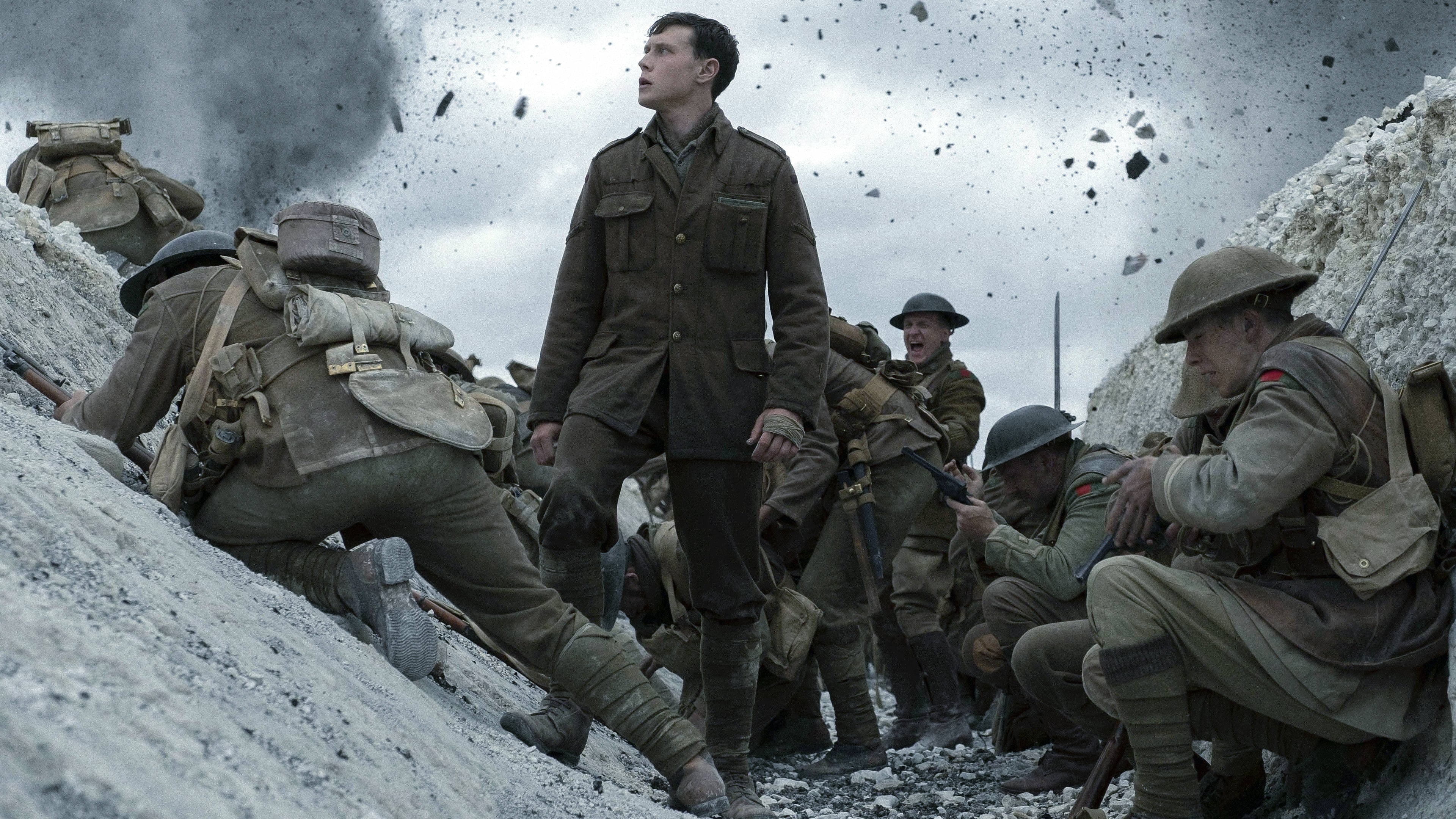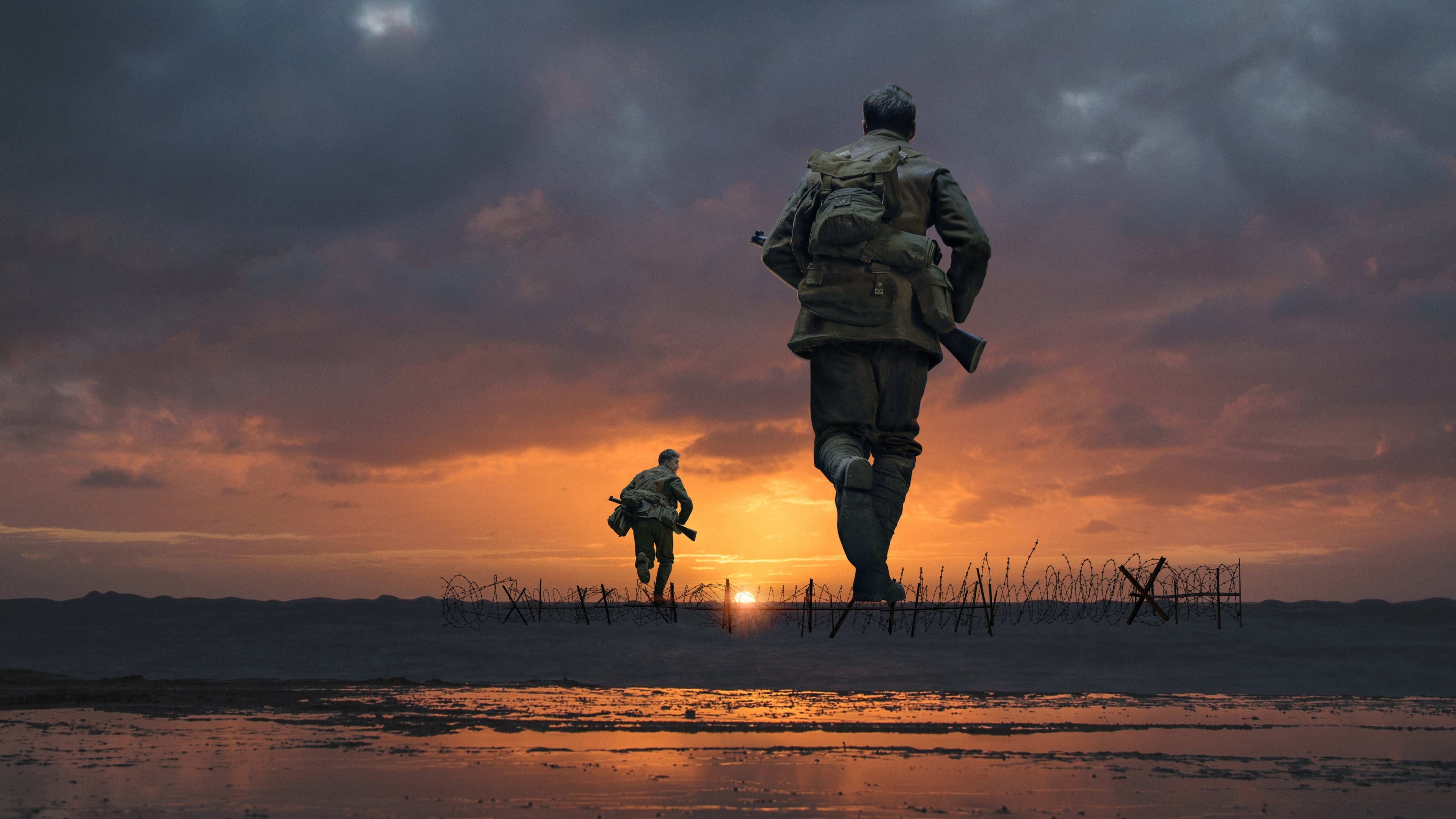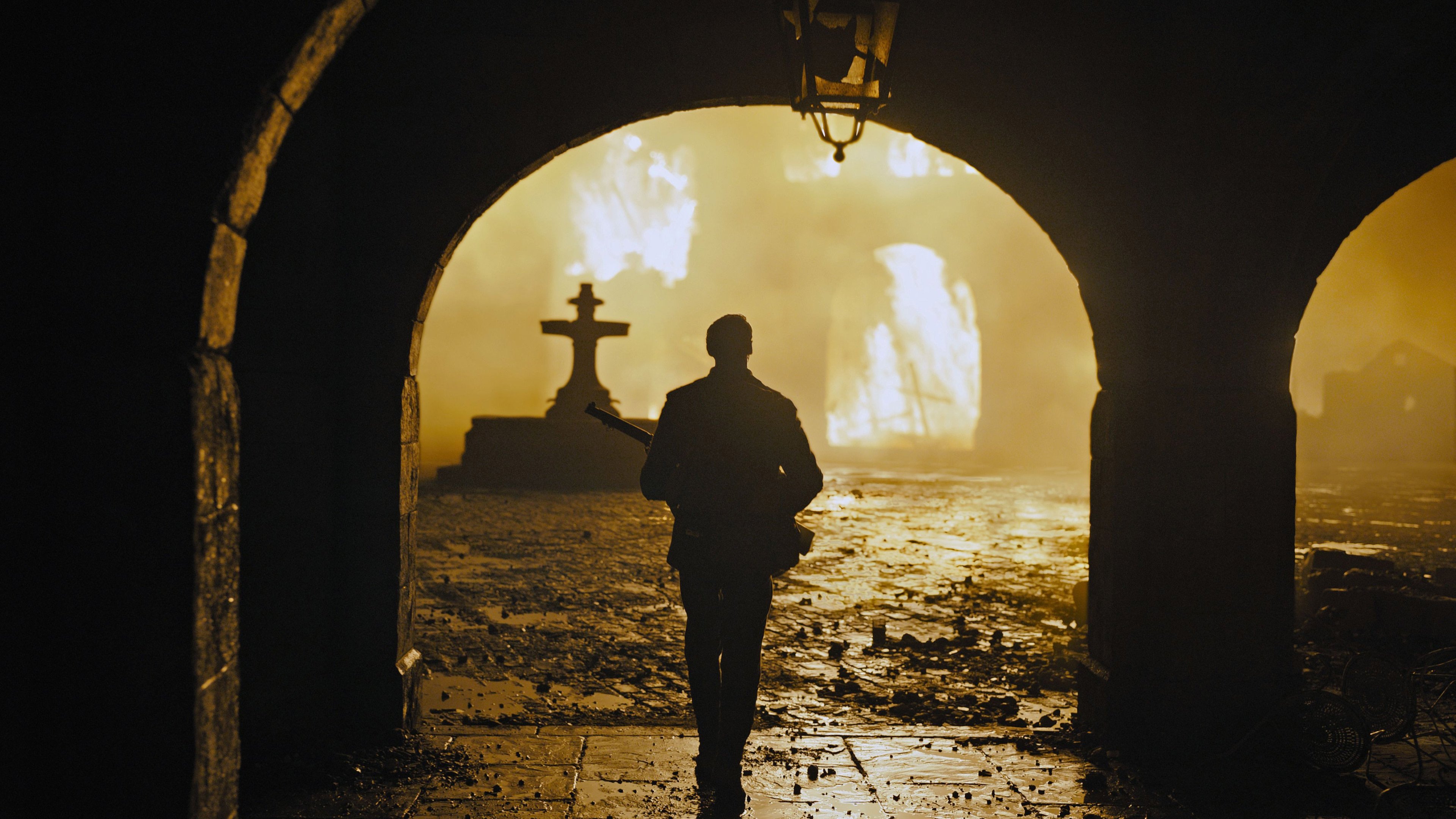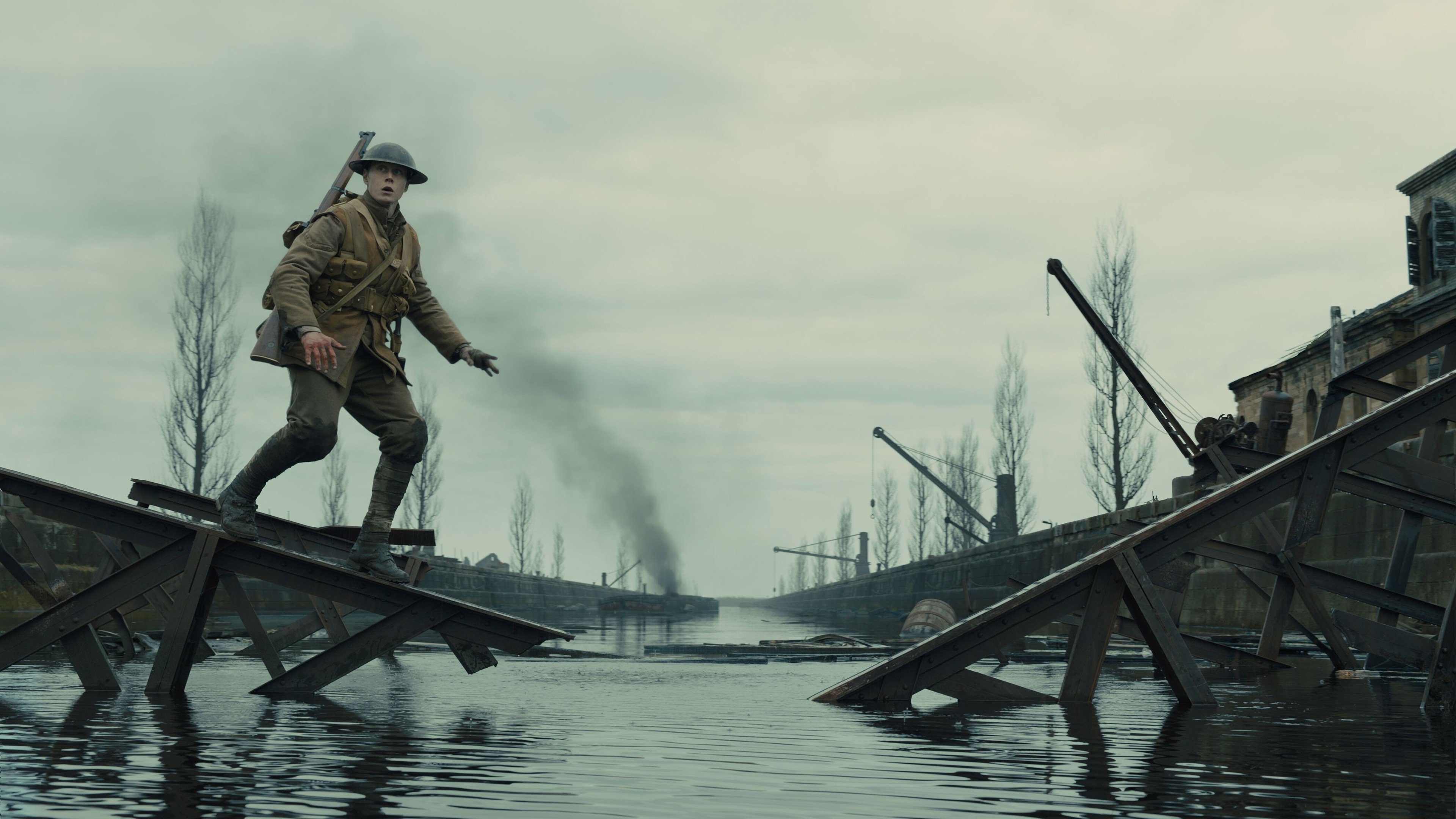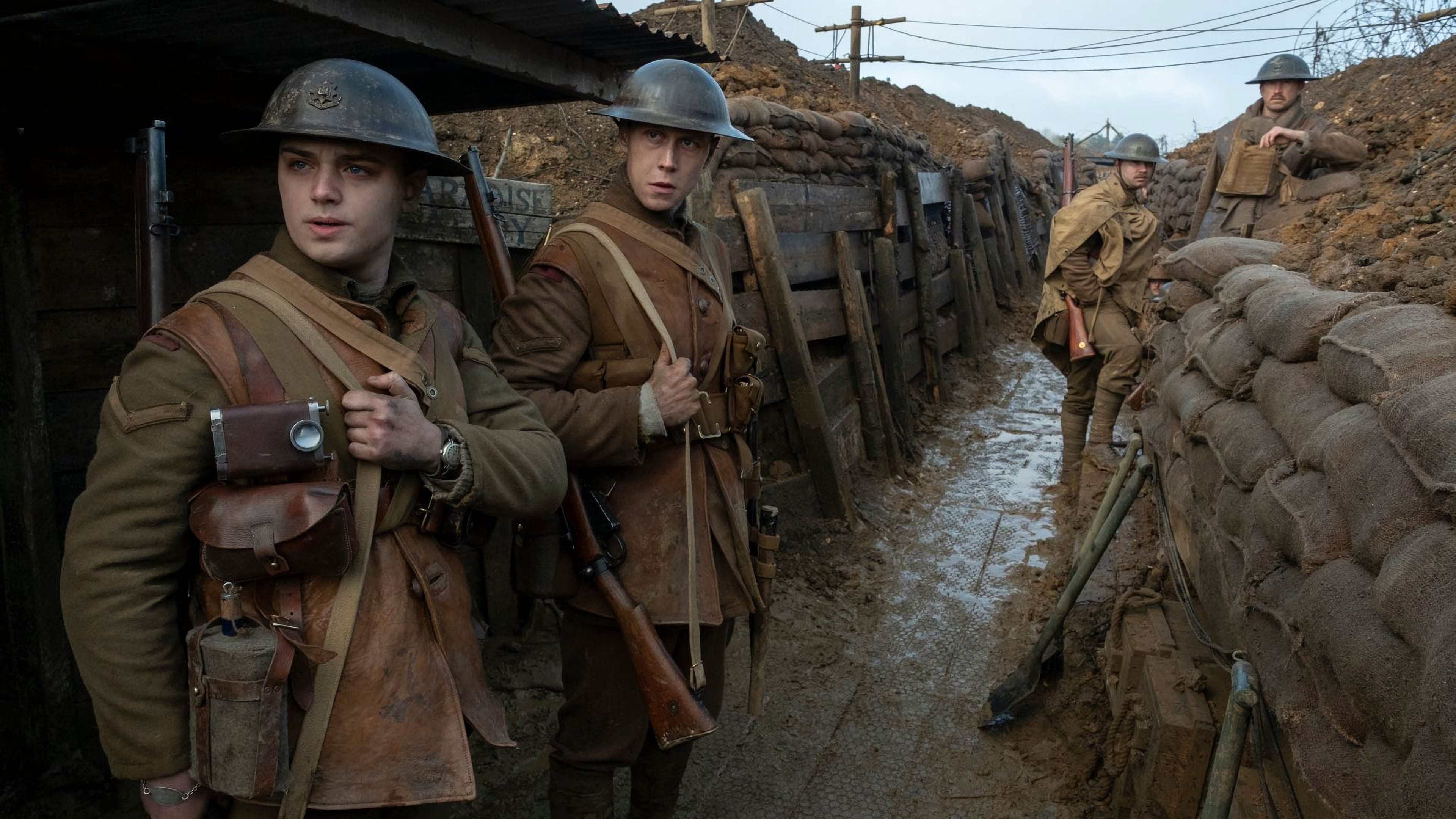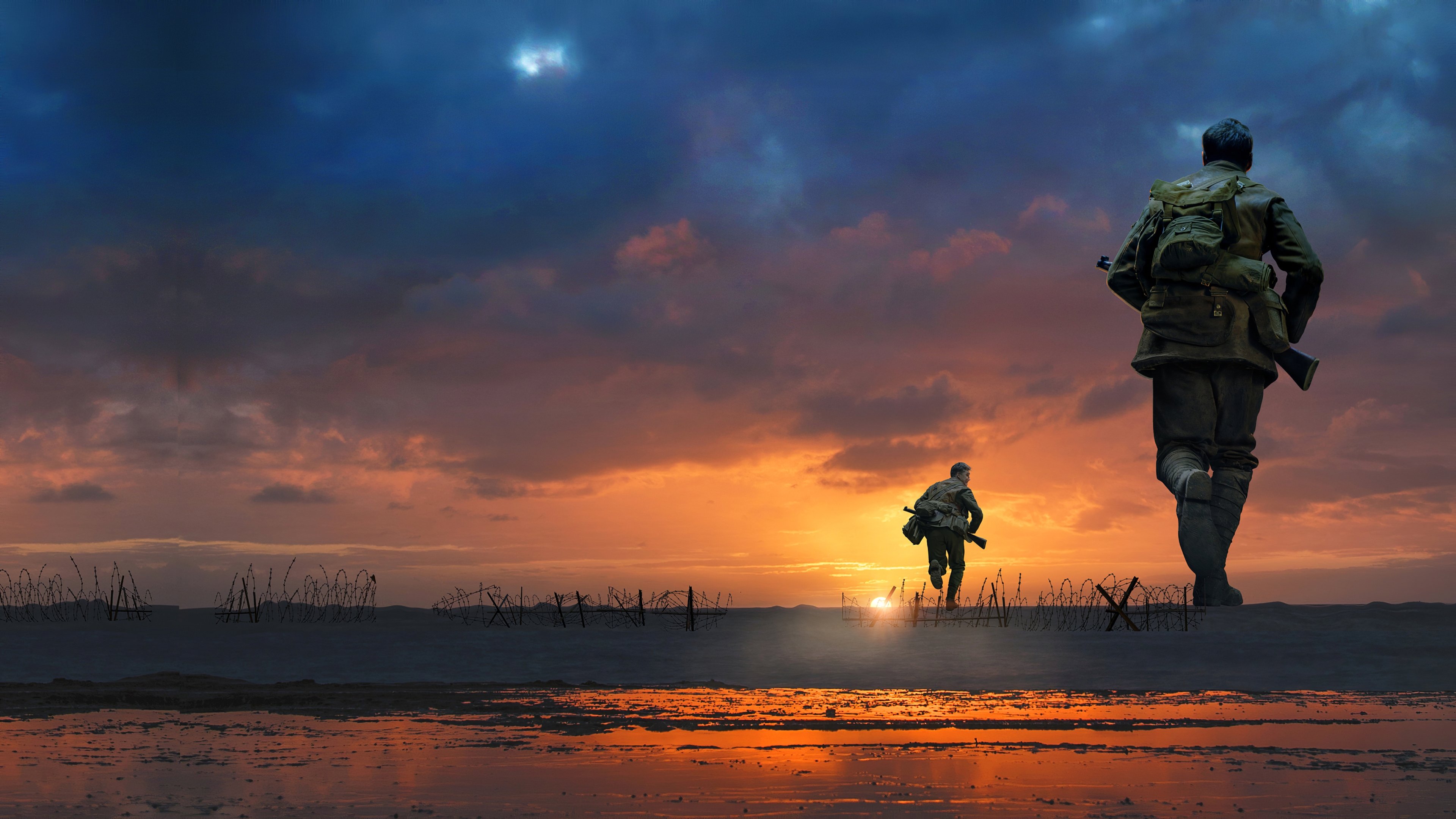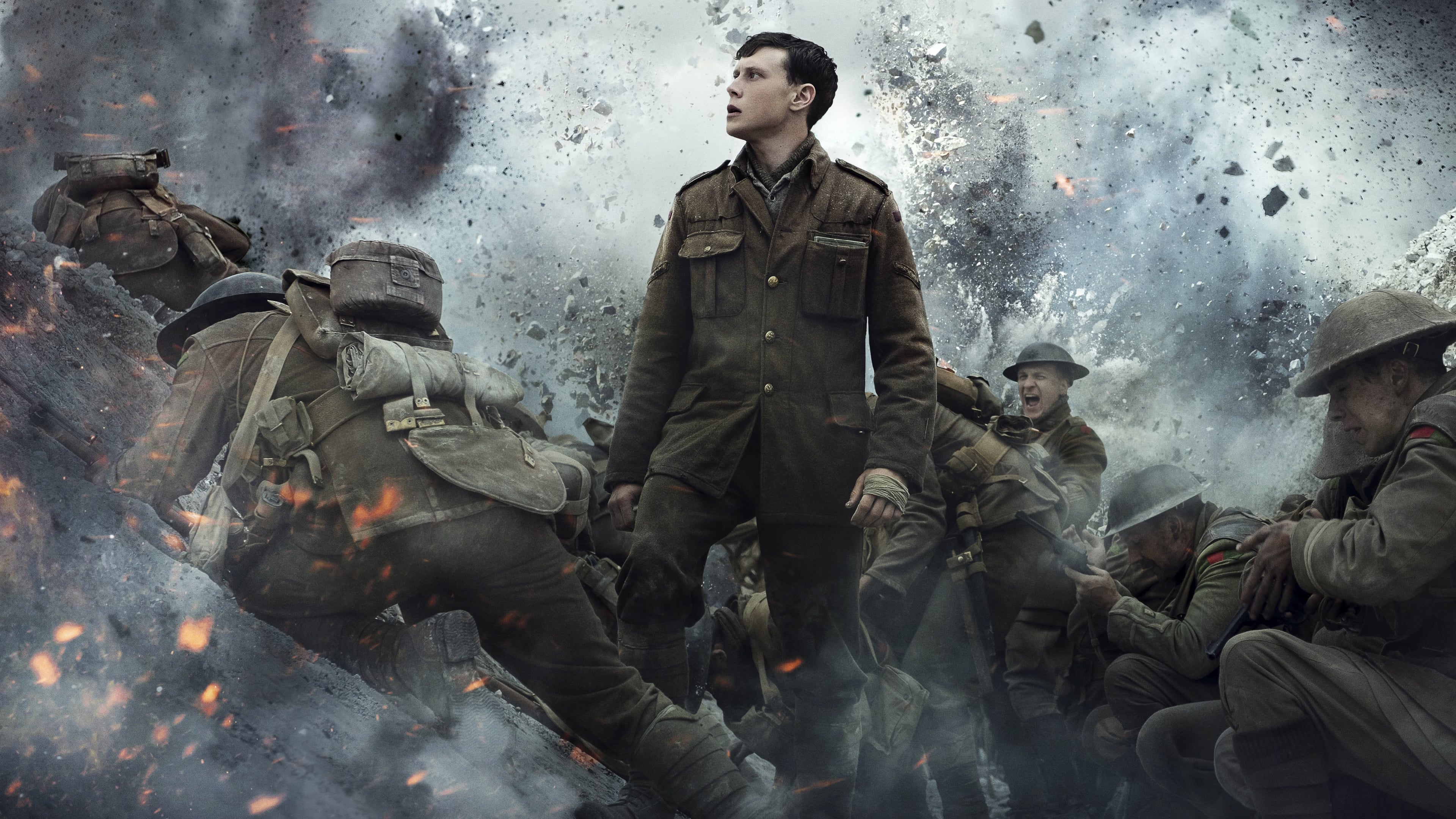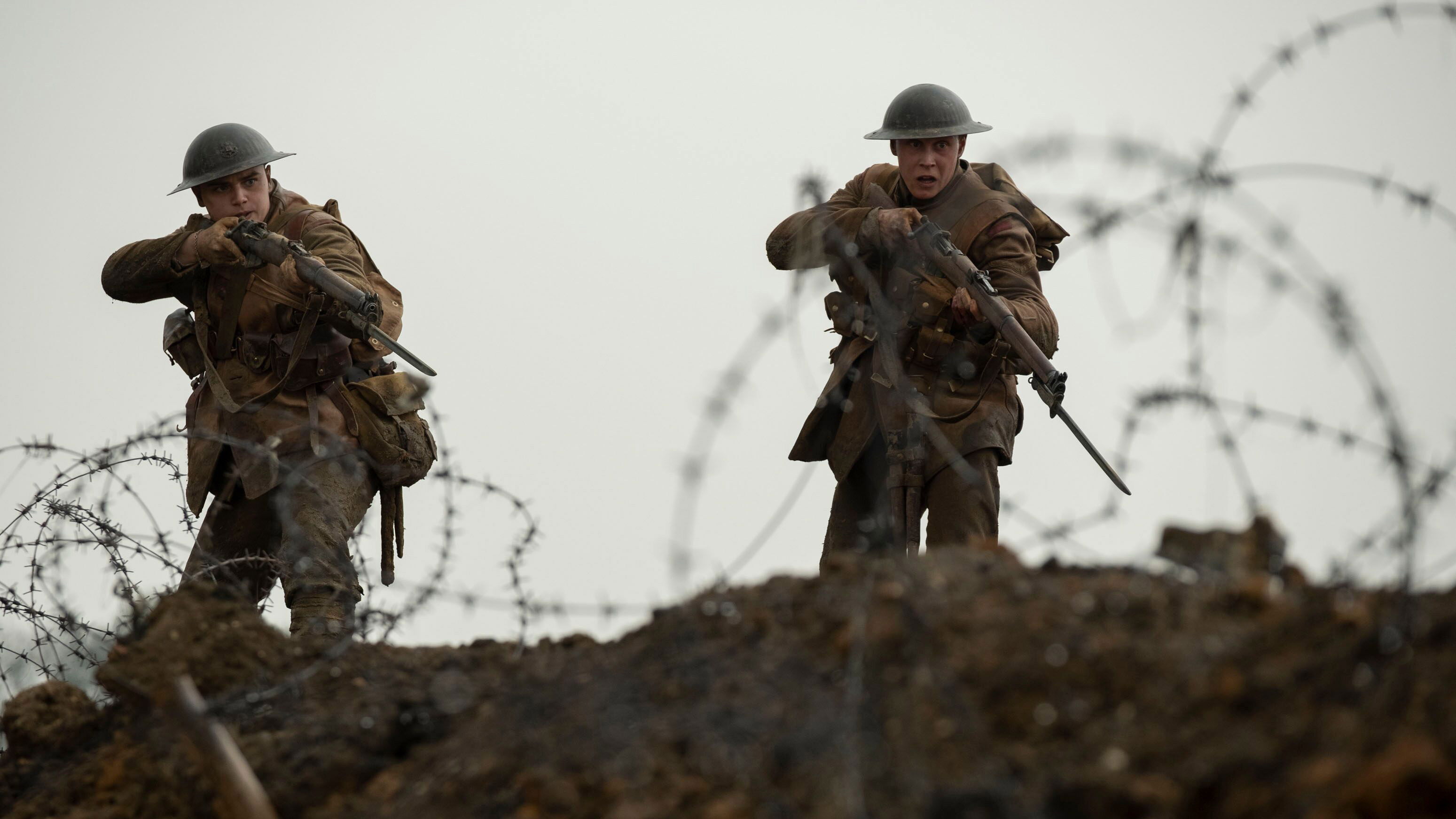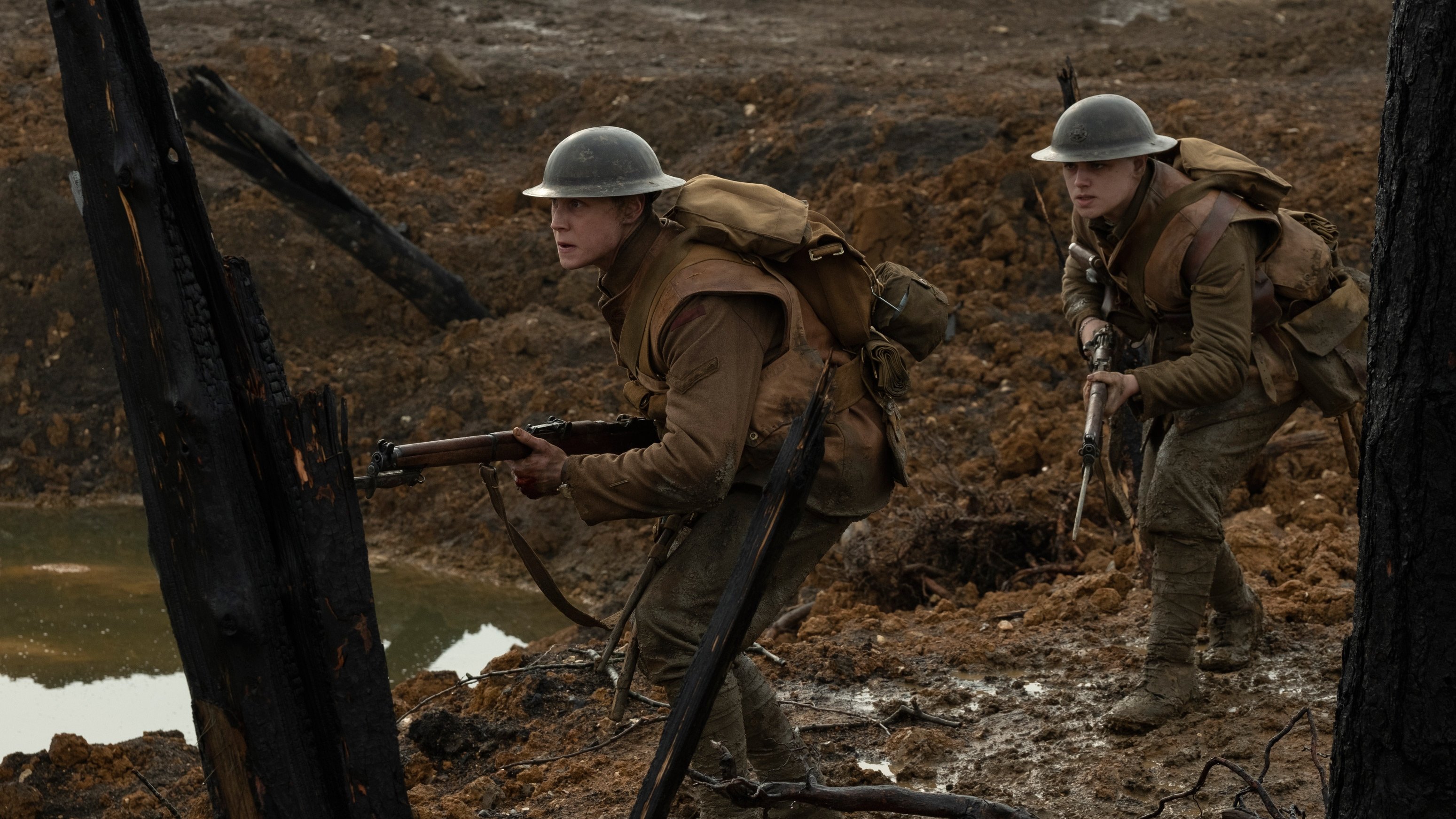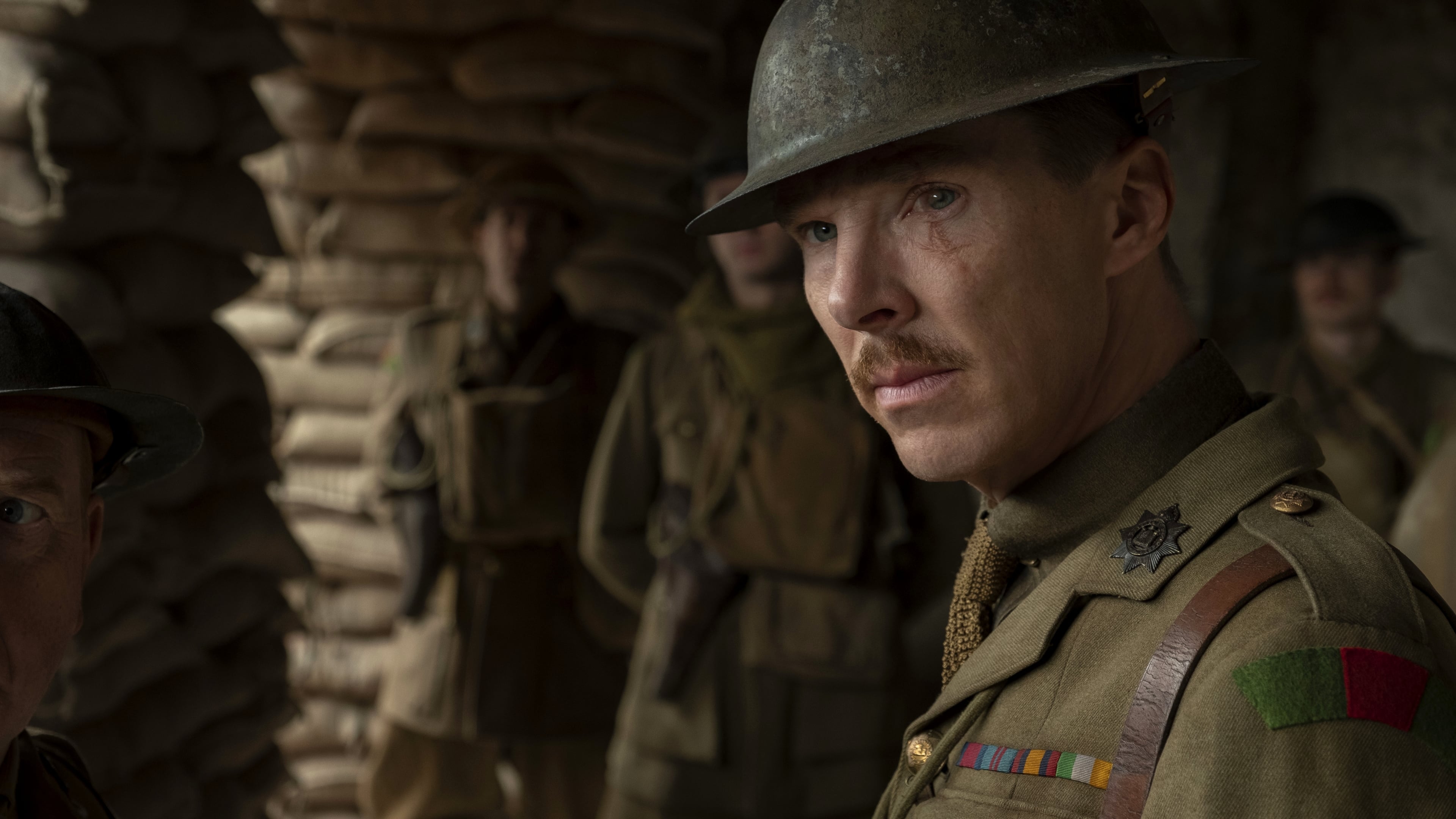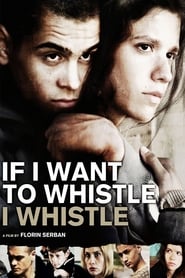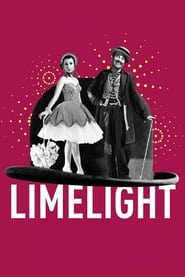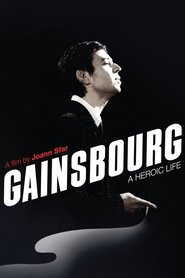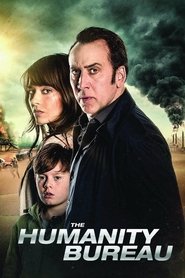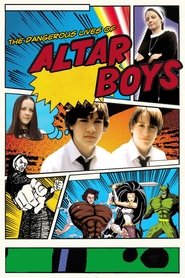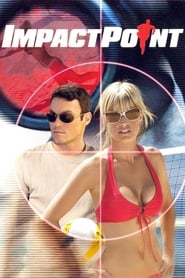
Video Sources 0 Views
Synopsis
Watch: 1917 2019 123movies, Full Movie Online – April 1917, the Western Front. Two British soldiers are sent to deliver an urgent message to an isolated regiment. If the message is not received in time the regiment will walk into a trap and be massacred. To get to the regiment they will need to cross through enemy territory. Time is of the essence and the journey will be fraught with danger..
Plot: At the height of the First World War, two young British soldiers must cross enemy territory and deliver a message that will stop a deadly attack on hundreds of soldiers.
Smart Tags: #world_war_one #year_1917 #no_man’s_land #long_take #24_hour_time_span #race_against_time #dangerous_mission #british_soldier #trench #death #abandoned_farm #mud #collapsed_bridge #rat #cherry_blossom #dead_horse #dead_body #tactical_retreat #burning_church #baby #based_on_true_story
Find Alternative – 1917 2019, Streaming Links:
123movies | FMmovies | Putlocker | GoMovies | SolarMovie | Soap2day
Ratings:
Reviews:
**_Although partly a technical showcase rather than a story, it’s still a terrific Great War movie_**>_In the newspapers you read: “Peacefully they rest on the spot where they have bled and suffered, while the guns roar over their graves, taking vengeance for their heroic death”. And it doesn’t occur to anybody that the enemy is also firing; that the shells plunge into the hero’s grave; that his bones are mingled with the filth which they scatter to the four winds – and that, after a few weeks, the morass closes over the last resting-place of the soldier._
– Kanonier Gerhard Gürtler (Königlich Bayerisches 3. Feldartillerie-Regiment Prinz Leopold)
>_Bent double, like old beggars under sacks,_
>_Knock-kneed, coughing like hags, we cursed through sludge,_
>_Till on the haunting flares we turned our backs,_
>_And towards our distant rest began to trudge._
>_Men marched asleep. Many had lost their boots,_
>_But limped on, blood-shod. All went lame; all blind;_
>_Drunk with fatigue; deaf even to the hoots_
>_Of gas-shells dropping softly behind._
– Wilfred Owen; “Dulce et Decorum Est” (1921)
>_No tactical or strategic gain was made on the Somme front that was worth the cost in lives. Even had the British and French achieved their breakthrough on the Somme, the Germans had plenty of room to manoeuvre and, unlike the French at Verdun, no national interest in staying where they were. During the winter of 1916-17, the Germans simply withdrew to the Hindenburg Line, east of the Somme battlefield, and it all had to be done again._
– Robin Neillands; _Attrition: The Great War on the Western Front – 1916_ (2001)
>_In the Somme valley, the back of language broke. It could no longer carry its former meanings. World War I changed the life of words and images in art, radically and forever. It brought our culture into the age of mass-produced, industrialised death. This, at first, was indescribable._
– Robert Hughes; _The Shock of the New_ (2004)
My paternal grandfather fought during the Great War. Corporal Edward J. Campbell was with the 9th Battalion of the Royal Dublin Fusiliers, 48th Brigade, 16th (Irish) Division and took part in the capture of Ginchy on September 9, 1916 during the Battle of the Somme. My dad was born in 1933, and in all the years that came afterwards – even when he himself joined the RAF – his father never spoke about those years.
The Great War broke men in ways the likes of which had never been seen before, and perhaps have never been seen since. It exposed men to psychological horrors inconceivable to most people today. The nature of trench warfare and the concomitant use of artillery on a scale beyond anything in human history did such things to men’s minds that even thousands of those who returned never really left the battlefields. We’ve all seen “Shell shocked soldier, 1916”, one of the most haunting photographs ever taken, and the picture it paints is a disturbingly vivid one. But what makes the Great War, the so-called “war to end all wars”, so much worse than it had to be was that it pitted old school tactics against modern weaponry. Generals on both sides believed the war could be won, as others had been, by sending wave after wave of men “over the top” in an attempt to overwhelm enemy positions. However, such tactics failed to take into account advancements in weaponry, with combatants defending their trenches with miles of machine-gun emplacements and fields of landmines, reinforced with the war’s most successful killer – endless artillery barrages. The technology had advanced. The tactics had not. Which led to the nine-month stalemate of the Battle of Verdun (February 21 to December 18, 1916), during which the Germans lost 143,000 men and the French lost 163,000. Which led to the first day of the Somme (July 1, 1916), when the British suffered nearly 20,000 loses in less than 12 hours. Which led to the unimaginable slaughter of the hell-come-to-Earth that was the Third Battle of Ypres, better known today as Passchendaele (July 31 to November 10, 1917), where at least 400,000 men died, maybe as many as twice that.
Every soul who fought in those battles is gone now. The last surviving combat veteran, Chief Petty Officer Claude Choules, who joined the Royal Navy in 1915, aged just 14, died at the age of 110 in 2011. And unlike conflicts such as World War II or Vietnam, The Great War has largely dropped from the popular consciousness. Not just the reasons why it was fought, but the conditions in which it was fought. Even celebrated films such as Lewis Milestone’s _All Quiet on the Western Front_ (1930) or Stanley Kubrick’s _Paths of Glory_ (1957) aren’t all that well known. And that’s one of the reasons that films like 1917 are important – they ensure we don’t forget.
Written by Sam Mendes and Krysty Wilson-Cairns, _1917_ is very loosely based on stories told to Mendes by his grandfather Alfred Hubert Mendes, who was a front line messenger during the war, and who, at 5’4″, was able to use the low-lying No Man’s Land mist as cover without having to stoop or crawl, and thus was much faster compared to other messengers. The film is directed by Mendes (_American Beauty_; _Revolutionary Road_; _Skyfall_), and unless you’ve been living under a rock, you’ll know that it’s done in such a way as to give the impression that it all takes place in two single shots (the marketing material says one shot, but it’s two – there’s a cut-to-black time-jump about midway through the film where no attempt is made to hide the transition). In reality, of course, there are a lot more than two shots (the longest single shot was just over 8 minutes), but the edits have been digitally ‘hidden’, much like Alejandro González Iñárritu’s _Birdman or (The Unexpected Virtue of Ignorance)_ (2014) or Erik Poppe’s _Utøya 22. Juli_ (2018). Working with legendary cinematographer Roger Deakins (_Kundun_; _No Country for Old Men_; _The Assassination of Jesse James by the Coward Robert Ford_; _The Reader_; _Blade Runner 2049_), Mendes wanted the film to be the most immersive war movie ever put on screen, with the story designed to take place in real-time so as to ensure the importance/relevance of the single-shot aesthetic. And although I have some issues with it, and I certainly don’t think it’s the greatest war movie ever made, by and large, I think Mendes has made an exceptional film, one in which form and content are unusually tightly matched, with the style extremely effective at delivering the story in a thematically justified manner.
April 6, 1917; the Western Front. Two young British Lance Corporals, Will Schofield (George MacKay), a veteran of the Somme, and the younger, more idealistic Tom Blake (Dean-Charles Chapman) are summoned to a meeting with General Erinmore (Colin Firth). Recently, German forces have fallen back, and Colonel Mackenzie (Benedict Cumberbatch) of the 2nd Battalion, Devonshire Regiment believes that if he attacks now, he will break the line and turn the tide of the war. However, he’s unaware that the retreat is a tactical gambit – the Germans have fallen back to the heavily fortified Hindenburg Line and are lying in wait. With communication lines cut, Schofield and Blake, who has a brother in the 2nd, are given a simple but dangerous mission – to physically carry an order from Erinmore to Mackenzie calling off the following morning’s attack, a mission which will involve them crossing into No Man’s Land and traversing the Germans’ former position. If they fail, 1,600 soldiers will be slaughtered. Mackenzie is six miles away. They have ten hours.
So, the film’s big selling point is its aesthetic design. The use of the single-shot format is such a noticeable and idiosyncratic type of form that whenever it’s used, it automatically places pressure on the content, which must justify why the film is shot this way, why it would lose something inherently thematic if shot conventionally. If the content can’t do that, in other words, if the content can’t justify the form, the form becomes gimmicky, drawing attention to itself. Think of, for example, Alfred Hitchcock’s _Rope_ (1948), which was edited to look like one shot, or Sebastian Schipper’s _Victoria_ (2015), which was legitimately one shot. Very little in either film justifies the stylistic design – shoot them conventionally and they’re still broadly the same film thematically. Compare this with genuine one-shot films such as Mike Figgis’s _Timecode_ (2000) or Alexander Sokurov’s _Russkij Kovcheg_ (2002), and edited one-shot films such as Gustavo Hernández’s _La casa muda_ (2010) or the aforementioned _Utøya 22. Juli_. Whether it’s the spiralling nature of events in _Timecode_, the elegant cause-and-effect historical sweep of _Russkij Kovcheg_, or the real-time pressure and escalation of _La casa muda_ and _Utøya 22. Juli_ these films tie form to content in such a way that they become indistinguishable – form _is_ content, content _is_ form. And I think Mendes achieves like synergy.
Is the one-shot effect distracting? At first, yes, it is a little, especially if you’re playing the game of trying to spot where editor Lee Smith (_Master and Commander: The Far Side of the World_; _Elysium_; _Interstellar_) has hidden the transitions. But after sussing two edits in the first twenty minutes, I stopped looking, because I realised I was just pulling myself out of the film unnecessarily. In essence, once you go with the aesthetic on its own terms, you forget about trying to spot the edits and asking yourself, “_how did they do that_”, instead of letting the cinematography do exactly what it’s supposed to do – immerse you. This is a film that wants to try to convey what it was like to live and fight in those trenches, with Mendes stating, “_I wanted people to understand how difficult it was for these men. And the nature of that is behind everything_”. And, it does about as good a job as any war film I can think of in evoking the psychical reality, if not necessarily the psychological (more on that in a moment).
Generally speaking, the majority of the film is shot in one of two ways – either the camera is behind Schofield and Blake, following their path, or it’s in front of them, facing back towards them as they ‘follow’ its path. There are some minor deviations from this (a few drone shots, some side-on footage etc), but irrespective of that, the film never for one second leaves their presence. And because the two men are almost perpetually in motion, it means that the camera is almost perpetually in motion, lending not only a tremendous fluidity to the blocking, framing, and movement, but so too a natural motivation – if they’re walking along a trench, we’re walking along a trench; if they’re moving stealthily through a bombed-out town, we’re moving stealthily through a bombed-out town. Almost everything the camera does is because one or both of the protagonists are doing the same thing, further emphasising the correlation between form and content.
The opening scene serves as a superb introduction not just to the visual design, but to the reasons for employing that visual design and the effectiveness of doing so. The film starts with a shot of a daffodil field, before pulling back and revealing Schofield and Blake taking a break against a tree before being summoned to the meeting with Erinmore. They rouse themselves and begin walking, first past more resting soldiers, then a camp where food and laundry are being prepared, then down a ramp into the trenches, the bucolic opening moments giving way to barbed wire and dirt. Geographically, it’s a short walk, but thematically, it covers considerable ground. In a film that’s all about scale and scope, this sequence perfectly encapsulates one of the main thematic reasons behind the single-shot – to accurately convey the importance of geospatial relations. We see the tactile transition from Edenic to hellish because we’re moving in real-time through the _milieu_ with the characters; we see the boundary between peace and war because the characters walk along that boundary. You shoot this opening sequence conventionally, and you undercut this sense considerably.
Along slightly more conventional lines, one also has to commend the work of production designer Dennis Gassner (_Bugsy_; _Waterworld_; _Into the Woods_). Every location is visually unique – from a German bunker to an abandoned farmhouse to the bombed-out remnants of Écoust-Saint-Mein, and every location feels authentic and lived in. His design of No Man’s Land is especially laudable, not just in terms of the expected mess of barbed wire and debris, but in the use and positioning of dead bodies, dead animals, and semi-destroyed machinery, with the whole thing having an almost post-nuclear desolation feel. Indeed, the film’s No Man’s Land is designed thematically. Mendes has said, “_the first World War starts with literally horses and carriages, and ends with tanks_”, and this is mirrored in Gassner’s designs. When the men first crawl into No Man’s Land, they immediately encounter a rotting fly-covered horse carcass. Gradually, however, the battlefield becomes more mechanised, until they eventually pass through a German artillery position.
Also in a slightly more conventional sense, one has to mention Deakins work during the nighttime scenes in Écoust-Saint-Mein. The entire village has been reduced to nothing but the shells of buildings, and as we pass through the town, the only source of light is from the flares arching through the sky, which create very hard shadows in constant motion. The whole thing is almost otherworldly, and as the garish light traverses the sky, it’s as if the ground itself is in motion, almost liquid-like, with the protagonists desperately trying to time their movements to ensure they stay hidden in the constantly shifting shadows. It might be a little too aesthetically beautiful for a film aiming for such gritty realism, but for aspiring cinematographers, you won’t find a better study in how to compose an image using light and shadow.
Thematically, by its very nature, _1917_ is far more focused on the micro than the macro – you might learn something about life on the front, but you’ll learn nothing about the politics behind the conflict, or even a sense of who’s winning. Partly because of this, the film avoids, for the most part, the overwrought patriotism found in so many American World War II movies, the kind of cartoonish jingoism that made Steven Spielberg’s _Saving Private Ryan_ (1998) so obnoxious. Indeed, it’s relatively unimportant which side the protagonists are even on – their mission could have come from any of the combatants. Their nationality is largely anonymous, which is not something you can usually say of a war film, but which does illustrate just how irrelevant lofty political issues were at ground level, with everyone simply trying to survive as best they can.
On the other hand, however, because the film is so tightly focused, you shouldn’t expect too much psychological insight. If you’re anticipating an existential treatise along the lines of Terrence Malick’s _The Thin Red Line_ (1998), you’ll be severely disappointed. Malick’s masterpiece is, for my money, the greatest war picture ever made precisely because it subverts at every moment what a war picture is supposed to be. It’s about the war within rather than the war without, about nature’s indifference to humanity’s self-destruction, about the damage war does not to the mind or the body, but the soul. _1917_ is nowhere near this kind of thematic complexity, it’s not even playing the same game, but I would value its simple individualised insights above something like the empty temporal trickery of Christopher Nolan’s _Dunkirk_ (2017), which leans far too heavily into the “keep a stiff upper lip chaps” style of British filmmaking for my liking.
In terms of problems. I’ve seen some critics argue that the one-shot structure is a gimmick which draws attention to itself, and thus, rather than being immersive actually has the opposite effect. I admit that the film does take a little getting used to, but you soon settle into its rhythms (or lack thereof). I would agree that the story is paper-thin, but that’s pretty much by design. One criticism I did have, however, is how well-groomed Scholfield and Blake constantly are, each with a perfect set of teeth. One only need watch Peter Jackson’s _They Shall Not Grow Old_ (2018) to see how unrealistic this is. Indeed, for most of the runtime, the duo look like they’ve just stepped out of the makeup trailer, and it’s glaring enough on a couple of occasions to pull you out of things.
All things considered though, I thoroughly enjoyed _1917_. I thought the single-shot strategy worked exceptionally well, and even if the film is weak from a character/storyline/theme perspective, it didn’t really matter when the form and content are this well matched. This could have become an empty technical exercise predicated on nothing, but Mendes hasn’t allowed that to happen, and instead, it’s a war film that does justice to its subject. The more one knows about the Great War, the more one realises that it was hell on Earth. _1917_ doesn’t make us feel what that hell was like. Because no film, no art form, can do that. But it’s a damn good approximation.
Review By: Stephen Campbell
Excellent original film. It truly sucks you in straight from the very first scene until the last. There’s nothing predictable in this well thought out and very tense (soon to be) classic.
Review By: Trazbor O’Gukguk
I Wanted to Hate This Hauntingly Beautiful Gift of a Movie
I sat in a packed yet silent theater this morning and watched, what I believe to be, the next Academy Award winner for the Best Picture. I’m not at all a fan of war movies but I am a fan of great movies….and 1917 is a great movie. I have never been so mesmerized by set design and direction, the mass human emotion of this film is astonishingly captured and embedded magically in the audience. It keeps running through my mind…the poetry and beauty intertwined with the raw misery of war. Treat yourself….see this movie!
Review By: tgrafflin
Riveting, hauntingly beautiful and mesmerizing
The entire movie made to look like it’s shot at one single take, this is possible because of extraordinary talented 14 times Academy Award nominee cinematographer Roger Deakins. This man is a genius, the movie is shot beautifully. it is mesmerizing to a watch world war 1 movie like it is happening right in front of you. The pacing is phenomenal. The only real flaw in the movie is that there are no great character building movements like other war movies but that is also intentional because, the main intention or motive is to save lives and not focus on characters in the movie and that works.
Review By: jashminocha
Other Information:
Original Title 1917
Release Date 2019-12-25
Release Year 2019
Original Language en
Runtime 1 hr 59 min (119 min)
Budget 100000000
Revenue 374733942
Status Released
Rated R
Genre Action, Drama, War
Director Sam Mendes
Writer Sam Mendes, Krysty Wilson-Cairns
Actors Dean-Charles Chapman, George MacKay, Daniel Mays
Country United Kingdom, United States, India, Spain
Awards Won 3 Oscars. 135 wins & 206 nominations total
Production Company N/A
Website N/A
Technical Information:
Sound Mix Dolby Atmos, Dolby Digital, Dolby Surround 7.1
Aspect Ratio 1.90 : 1 (IMAX version), 2.39 : 1
Camera Arri Alexa Mini LF, Arri Signature Prime Lenses
Laboratory Company 3, London, UK (digital intermediate) (dailies)
Film Length N/A
Negative Format Codex
Cinematographic Process ARRIRAW (4.5K) (source format), Digital Intermediate (4K) (master format), Dolby Vision
Printed Film Format D-Cinema
Original title 1917
TMDb Rating 7.981 10,419 votes
Director
Director


